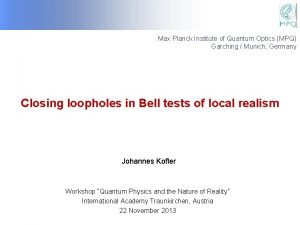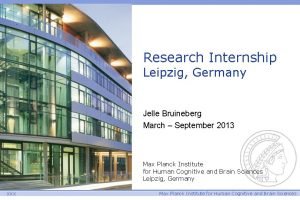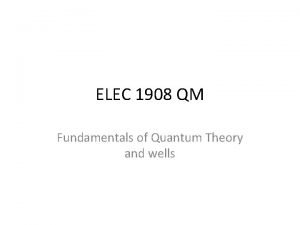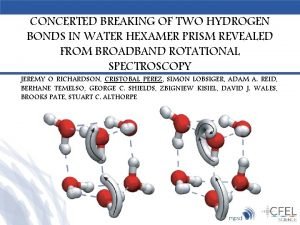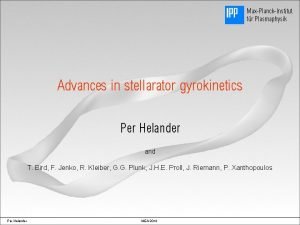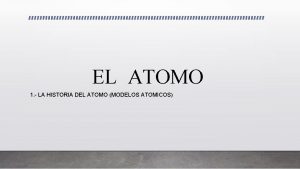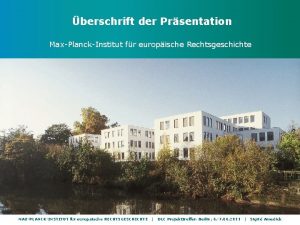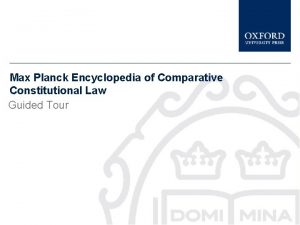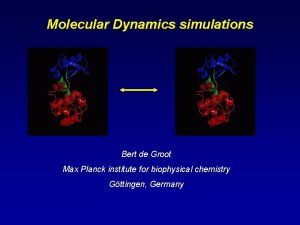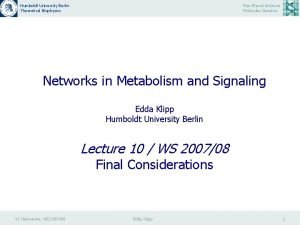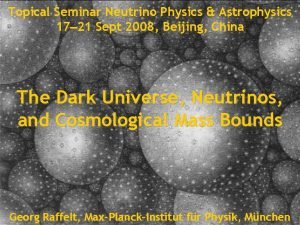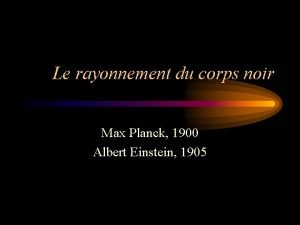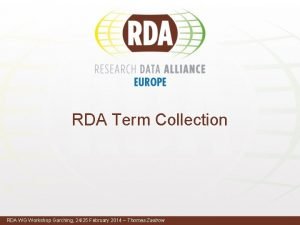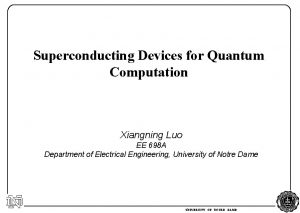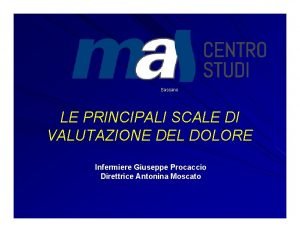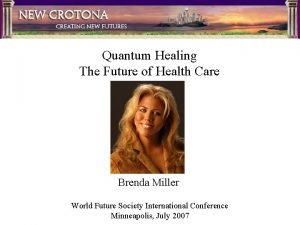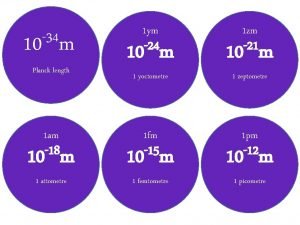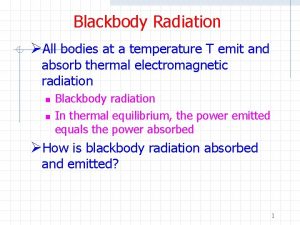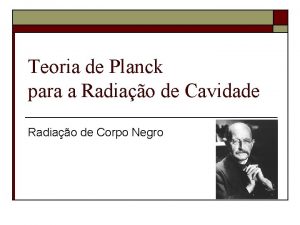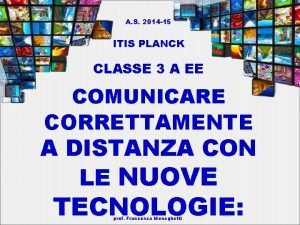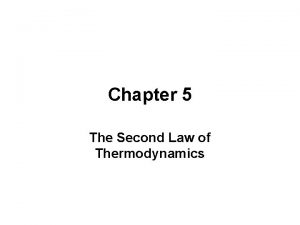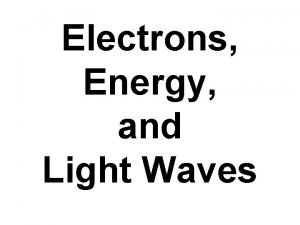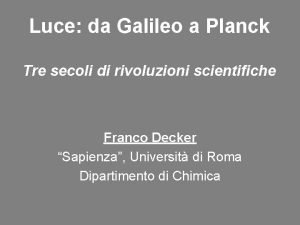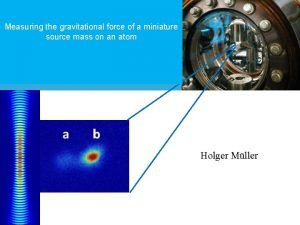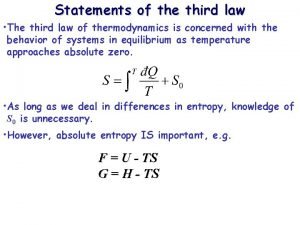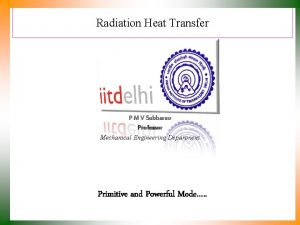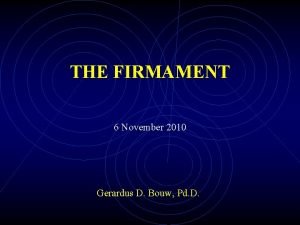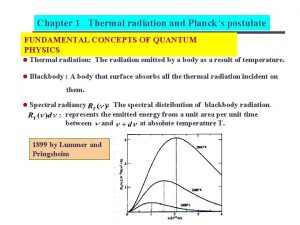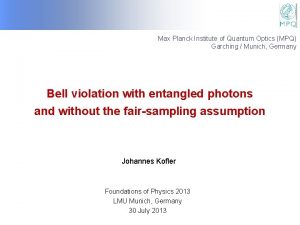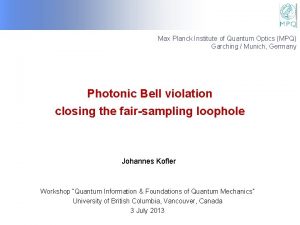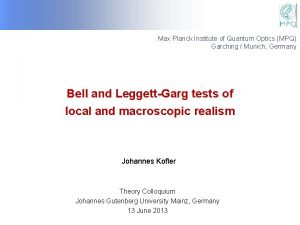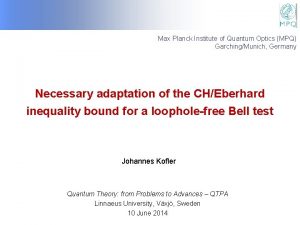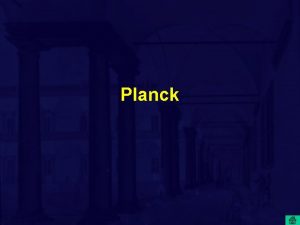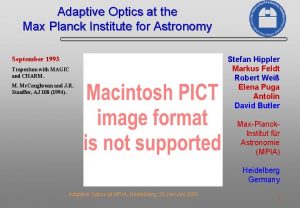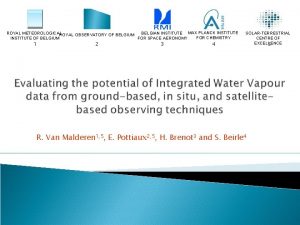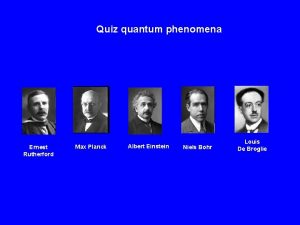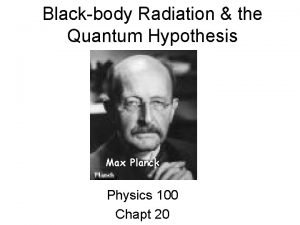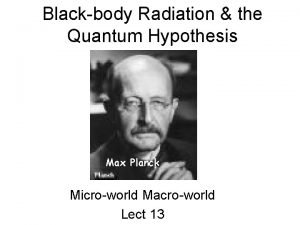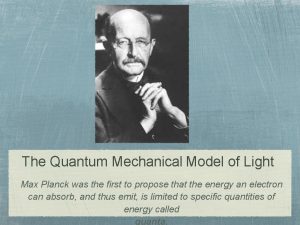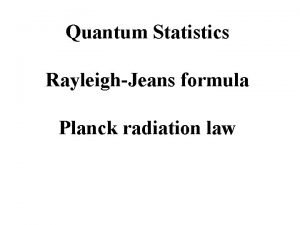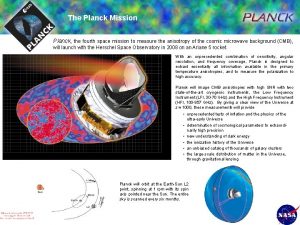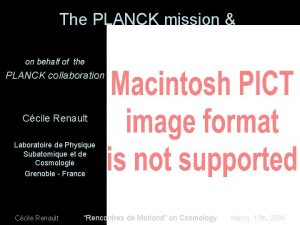Max Planck Institute of Quantum Optics MPQ Garching



































- Slides: 35

Max Planck Institute of Quantum Optics (MPQ) Garching / Munich, Germany Bell and Leggett-Garg inequalities in tests of local and macroscopic realism Johannes Kofler University of Valencia, Spain 25 June 2013

Outlook • Quantum entanglement vs. local realism - Bell’s inequality - Loopholes - Entanglement swapping & teleportation • Macroscopic quantum superpositions vs. macrorealism - Leggett-Garg inequality - Quantum-to-classical transition - Witnessing non-classical evolutions in complex systems • Conclusion and outlook

Local realism Classical world view: • Realism: properties of physical objects exist independent of whether or not they are observed by anyone • Locality: no physical influence can propagate faster than the speed of light External world Passive observers

Bell’s inequality Realism Locality Local realism: A = A(a, , b, B) B = B(b, , a, A) outcomes settings Alice Bob A = ± 1 B = ± 1 a 1, a 2 b 1, b 2 A 1 (B 1+B 2) + A 2 (B 1–B 2) = ± 2 S : = A 1 B 1 + A 1 B 2 + A 2 B 1 – A 2 B 2 2 variables Bell’s inequality* Quantum mechanics: SQM = 2 2 2. 83 using entangled quantum states, e. g. | AB = (|HV AB + |VH AB) / 2 First experimental violation: 1972 Since then: tests with photons, atoms, superconducting qubits, … *J. S. Bell, Phys. 1, 195 (1964); J. F. Clauser et al. , PRL 23, 880 (1969)

Quantum entanglement Entangled state: | AB = (| AB + | AB) / 2 Alice Bob basis: result / : / : / : locally: random globally: perfect correlations / : A 2 A 1 B 2 Top picture: http: //en. wikipedia. org/wiki/File: SPDC_figure. png

Entanglement and knowledge “Total knowledge of a composite system does not necessarily include maximal knowledge of all its parts, not even when these are fully separated from each other and at the moment are not influencing each other at all. ” (1935) Erwin Schrödinger

Loopholes: Why important? maintain local realism despite Sexp > 2 - Quantum foundations - Security of entanglement-based quantum cryptography Three main loopholes: • Locality loophole hidden communication between the parties closing: hard for atoms, achieved for photons (19821, 19982) • Freedom of choice settings are correlated with hidden variables closing: hard for atoms, achieved for photons (20103) • Fair sampling measured ensemble is not representative E closing: achieved for atoms (20014) and photons (20135) A. Aspect et al. , PRL 49, 1804 (1982) 2 G. Weihs et al. , PRL 81, 5039 (1998) 3 T. Scheidl et al. , PNAS 107, 10908 (2010) 1 4 5 M. A. Rowe et al. , Nature 409, 791 (2001) M. Giustina et al. , Nature 497, 227 (2013)

Ensuring locality & freedom of choice Sexp = 2. 37 0. 02 Tenerife b, B La Palma E, A a E La Palma Tenerife Locality: A is space-like sep. from b and B B is space-like sep. from a and A p(A, B|a, b, ) = p(A|a, ) p(B|b, ) Freedom of choice: a and b are random a and b are space-like sep. from E p(a, b| ) = p(a, b) T. Scheidl, R. Ursin, J. K. , T. Herbst, L. Ratschbacher, X. Ma, S. Ramelow, T. Jennewein, A. Zeilinger, PNAS 107, 10908 (2010)

Ensuring fair sampling Problem: detection efficiency could depend on settings A = A( ), B = B( ) Solution: Superconducting transition edge sensors • very good detectors • Eberhard inequality* - undetected (“u”) events in derivation - required detection efficiency only 2/3 From Topics in Applied Physics 99, 63 -150 (2005) +1 – 1 Source +1 – 1 local realism * P. H. Eberhard, PRA 47, 747 (1993)

First fair sampling of photons local realism quantum violation of local realism with fair sampling Detection efficiency 75% Violation by 70 standard deviations Photon: only system for which all loopholes are closed (not yet simultaneously) M. Giustina, A. Mech, S. Ramelow, B. Wittmann, J. K. , Jörn Beyer, A. Lita, B. Calkins, T. Gerrits, S. W. Nam, R. Ursin, A. Zeilinger, Nature 497, 227 (2013)

Large distances How to distribute entanglement over large distances? Two answers: - qu. cryptography between Vienna and Paris - distributed quantum computation - glass fibers & quantum repeaters - no fibers: free space Quantum repeaters use entanglement swapping* * M. Žukowski et al. , PRL 71, 4287 (1993) Bell-state measurement (BSM): Entanglement swapping

Delayed-choice entanglement swapping Later measurement on photons 2 & 3 decides whether 1 & 4 were separable or entangled Naïve class. interpretation would require influences into the past Temporal order does not matter in qu. mechanics X. Ma, S. Zotter, J. K. , R. Ursin, T. Jennewein, Č. Brukner, A. Zeilinger, Nature Phys. 8, 479 (2012)

Quantum teleportation Towards a world-wide “quantum internet” X. Ma, T. Herbst, T. Scheidl, D. Wang, S. Kropatschek, W. Naylor, A. Mech, B. Wittmann, J. K. , E. Anisimova, V. Makarov, T. Jennewein, R. Ursin, A. Zeilinger, Nature 489, 269 (2012)

The next step ISS (350 to 400 km altitude)

Contents • Quantum entanglement vs. local realism - Bell’s inequality - Loopholes - Entanglement swapping & teleportation • Macroscopic quantum superpositions vs. macrorealism - Leggett-Garg inequality - Quantum-to-classical transition - Witnessing non-classical evolutions in complex systems • Conclusion

The double slit experiment Particles Waves Quanta Superposition: | = |left + |right Picture: http: //www. blacklightpower. com/theory/Double. Slit. shtml

Macroscopic superpositions With photons, electrons, neutrons, molecules etc. With cats? |cat left + |cat right ? 6910 AMU* When and how do physical systems stop to behave quantum mechanically and begin to behave classically (“measurement problem”)? * S. Gerlich et al. , Nature Comm. 2, 263 (2011)

Local realism vs. macrorealism Are “non-local” correlations possible? Are macroscopic superpositions possible? Quantum mechanics says “yes” (use entanglement) “yes” (if you manage to defy decoherence) Local realism (e. g. classical physics) says Macrorealism (e. g. classical physics, objective collapse models) says “no” (only classical correlations) “no” (only classical temporal correlations) Bell test Leggett-Garg test has given experimental answer in favor of quantum mechanics can/will give experimental answer, community still split Practical relevance qu. computation, qu. cryptography witnessing temporal qu. coherence

Macrorealism • Macrorealism per se: given a set of macroscopically distinct states, a macroscopic object is at any given time in a definite one of these states • Non-invasive measurability: measurements reveal the state without any effect on the state itself or on the subsequent dynamics • Leggett-Garg inequality (LGI) K : = Q 1 Q 2 + Q 2 Q 3 + Q 3 Q 4 – Q 1 Q 4 2 = non-invasiveness Bell: S : = A 1 B 1 + A 1 B 2 + A 2 B 1 – A 2 B 2 2 = locality • Quantum mechanics: KQM = 2 2 2. 83 A. J. Leggett and A. Garg, PRL 54, 857 (1985) t 0 Q Q ± 1 t 2 t 3 t 4 time

Quantum vs. classical Rotating spin ½ particle (eg. electron) ½ Rotating classical spin vector (eg. gyroscope) Precession around an axis (via magnetic field or external force) Measurments along different axis K > 2: violation of Leggett. Garg inequality K 2: no violation, classical time evolution 2 2 classical limit

Sharp vs. coarse-grained measurements Spin j Coarse-grained measurement or decoherence Sharp measurement of spin z-component 1 3 5 7. . . Q = – 1 –j +j 2 4 6 8. . . Q = +1 –j +j macroscopically distinct states classical limit Violation of Leggett-Garg inequality for arbitrarily large spins j J. K. and Č. Brukner, PRL 99, 180403 (2007) Classical physics of a rotating classical spin vector

Superposition vs. mixture Sharp measurements Coarse-grained measurements or decoherence To see quantumness: need to resolve j 1/2 levels & protect system from environment J. K. and Č. Brukner, PRL 101, 090403 (2008)

Non-classical evolutions are complex Rotation in real space “classical” Oscillating Schrödinger cat “non-classical” rotation in Hilbert space N elementary spins ½ “+” t t time 1 single computation step per t all N rotations can be done simultaneously J. K. and Č. Brukner, PRL 101, 090403 (2008) t “+” t N sequential steps per t time

Relation quantum-classical

Macroscopic candidates Heavy molecules 1 Superconducting devices 2 (position) (current) Atomic gases 3 Nanomechanics 4 (spin) (position, momentum) S. Gerlich et al. , Nature Comm. 2, 263 (2011) 2 M. W. Johnson et al. , Nature 473, 194 (2011) 1 3 4 B. Julsgaard et al. , Nature 413, 400 (2001) G. Cole et al. , Nature Comm. 2, 231 (2011)

Alternative to Leggett-Garg inequality • No-signaling in time (NSIT): “A measurement does not change the outcome statistics of a later measurement. ”* t 0 A B t. A t. B • MR NSIT Violation of NSIT witnesses non-classical time evolution • Advantages of NSIT compared to LGI: - Only two measurement times (simpler witness) - Violated for broader parameter regime (better witness) • LGI and NSIT are tools for witnessing temporal quantum coherence in complex systems (not necessarily having macroscopic superpositions) • Does quantum coherence give biological systems an evolutionary advantage? * J. K. and Č. Brukner, PRA 87, 052115 (2013)

Candidates for quantum biology Photosynthesis: Light harvesting in the FMO complex Avian compass electronic excitation (by sunlight) in antenna is transferred to reaction center radical pair mechanism proposed evidence for efficiency increase due to quantum coherent transport reaction products depend on earth magnetic field M. Sarovar et al. , Nature Phys. 6, 462 (2010) N. Lambert et al. , Nature Phys. 9, 10 (2013)

Conclusion and outlook • Local realism - world view radically different from quantum mechanics - violated experimentally (Bell tests) by qu. entanglement - all loopholes are closed, but not yet simultaneously - loopholes relevant for qu. cryptography - long distance distribution of entanglement • Macrorealism - related to the measurement problem (Schrödinger’s cat) - quantum mechanics predicts violation - quantum-to-classical transition - Leggett-Garg inequality (LGI) not yet violated for macroscopic objects; several candidates - no-signaling in time (NSIT) as an alternative - LGI and NSIT: tools for witnessing quantum time evolution in mesoscopic systems including biological organisms

Acknowledgments Caslav Brukner Ignacio Cirac Anton Zeilinger Maximilan Ebner Alexandra Mech Marissa Giustina Sven Ramelow Thomas Herbst Thomas Scheidl Thomas Jennewein Mandip Singh Michael Keller Rupert Ursin Mateusz Kotyrba Bernhard Wittmann Xiao-song Ma Stefan Zotter

Appendix

Einstein vs. Bohr Albert Einstein (1879– 1955) Niels Bohr (1885– 1962) What is nature? What can be said about nature?

Interpretations Copenhagen interpretation quantum state (wave function) only describes probabilities objects do not possess all properties prior to and independent of measurements (violating realism) individual events are irreducibly random Bohmian mechanics quantum state is a real physical object and leads to an additional “force” particles move deterministically on trajectories position is a hidden variable & there is a non-local influence (violating locality) individual events are only subjectively random Many-worlds interpretation all possibilities are realized parallel worlds

Entanglement from Bose-Einstein condensates First entanglement of massive particles in external degree of freedom (momentum) Picture: A. Perrin et al. , PRL 99, 150405 (2007) J. K. , M. Singh, M. Ebner, M. Keller, M. Kotyrba, A. Zeilinger, PRA 86, 032115 (2012)

Locality vs. non-invasiveness How to enforce locality? How to enforce non-invasiveness? Space-like separation Ideal negative measurements Special relativity guarantees impossibility of physical influence Taking only those results where no interaction with the object took place ? ? – 1 +1 ü

Stages towards violation of MR • Quantum interference between macroscopically distinct states (QIMDS) does not necessarily establish the truth of quantum mechanics (QM) • Leggett’s three stages of experiments: * “Stage 1. One conducts circumstantial tests to check whether the relevant macroscopic variable appears to be obeying the prescriptions of QM. Stage 2. One looks for direct evidence for QIMDS, in contexts where it does not (necessarily) exclude macrorealism. Stage 3. One conducts an experiment which is explicitly designed so that if the results specified by QM are observed, macrorealism is thereby excluded. ” • However: step from stage 2 to 3 is straightforward via violation of NSIT * A. J. Leggett, J. Phys. : Cond. Mat. 14, R 415 (2002)
 Mpq garching
Mpq garching Max planck institute neuroscience internship
Max planck institute neuroscience internship Difference between ray optics and wave optics
Difference between ray optics and wave optics Reflection and refraction venn diagram
Reflection and refraction venn diagram Xkcd exponential
Xkcd exponential Max planck
Max planck Wendelstein 7-x
Wendelstein 7-x La historia del átomo
La historia del átomo Max planck institut rechtsgeschichte
Max planck institut rechtsgeschichte Max planck encyclopedia of comparative constitutional law
Max planck encyclopedia of comparative constitutional law Bert l. de groot
Bert l. de groot Biophysics
Biophysics ;,dk jhd'v
;,dk jhd'v 1900 max planck
1900 max planck Garching wg
Garching wg Superconducting devices in quantum optics
Superconducting devices in quantum optics Livello di dolore
Livello di dolore Classical physics
Classical physics Quantum physics vs quantum mechanics
Quantum physics vs quantum mechanics Local maximum
Local maximum Quantum edge healing institute
Quantum edge healing institute Planck length
Planck length Planck's radiation law
Planck's radiation law Era de planck
Era de planck Isentropic compressor
Isentropic compressor Itis planck
Itis planck Kelvin planck statement
Kelvin planck statement What is a photon made of
What is a photon made of Legge di planck
Legge di planck Planck
Planck Gibbs helmholtz equation
Gibbs helmholtz equation Planck's radiation law
Planck's radiation law Planck's constant
Planck's constant Egyptian firmament
Egyptian firmament Clausius inequality in thermodynamics
Clausius inequality in thermodynamics Plancks postulate
Plancks postulate
